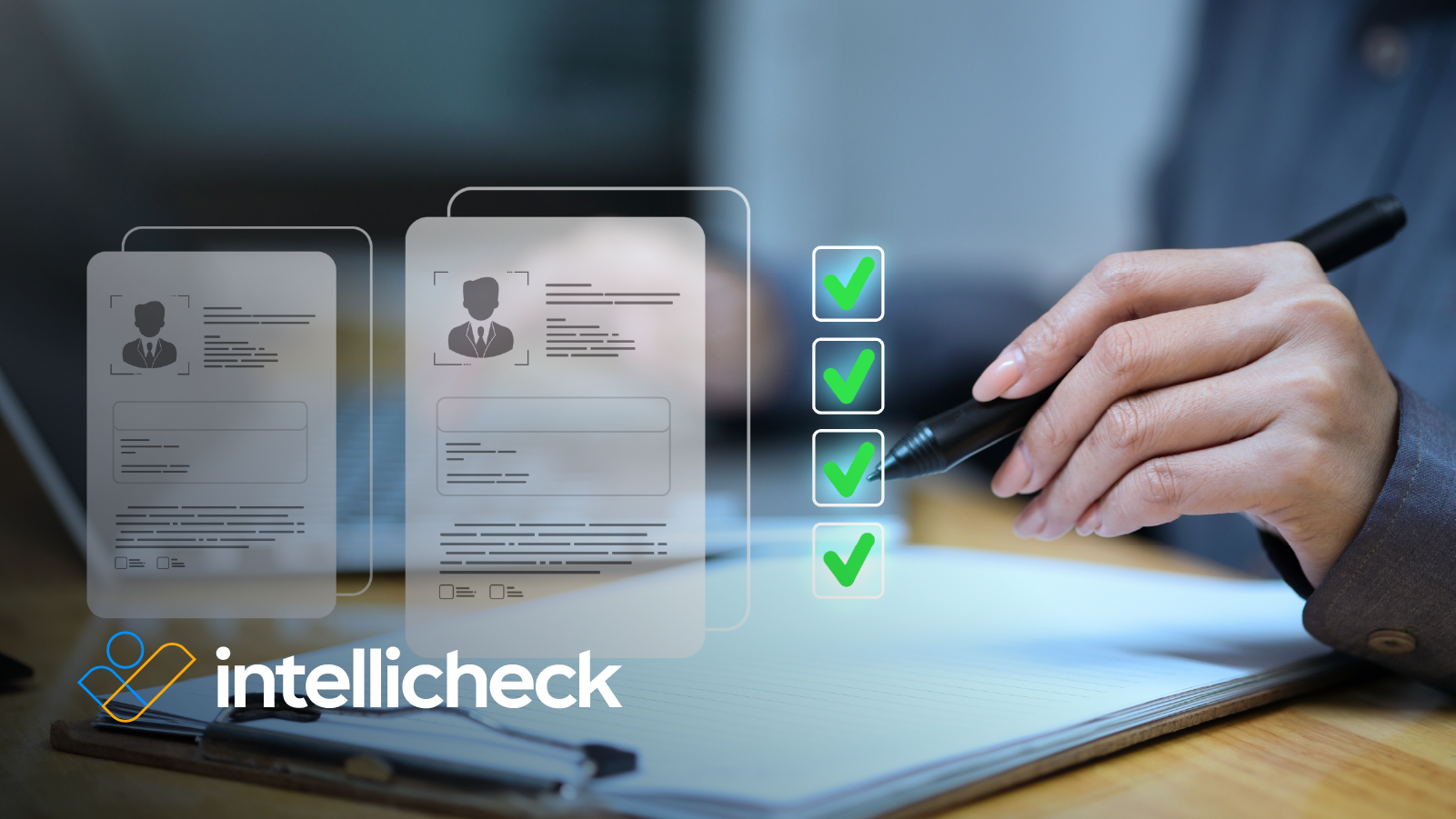Even one bad actor can unravel everything you've built
As a CEO, I understand the importance of building strong systems—especially when it comes to securing our people, processes, and data. But here’s a hard truth many organizations overlook: If you get identity verification wrong, everything else in your security stack is built on sand.
Before you worry about firewalls, access controls, or multi-factor authentication, ask yourself: Do I know who I just let in the front door?
Whether someone is applying for a job or gaining access to internal systems as a contractor or consultant, your business’s security starts with identity. And increasingly, that identity is being faked.
Fake IDs Are Today’s Entry Point for Fraud
From job applicants using someone else’s credentials to fraudsters gaining access to your company’s systems with forged licenses, bad actors are gaining access by pretending to be someone they're not. Thanks to the dark web and cheap tech, producing high-quality fake IDs is easier than ever.
But most companies don’t catch them. Why? Because too many organizations rely on visual checks, OCR scans, or basic barcode readers—none of which can detect whether the data on an ID is real or fake.
You Can’t Secure What You Never Verified
Think about it: If you let someone into your organization using a fake or stolen ID, every downstream security measure—no matter how sophisticated—is irrelevant. You’ve let a fox into the henhouse. The damage is already done.
The risk increases exponentially when businesses hire or contract with individuals who work remotely.
Just last month, the FBI and Department of Justice announced one of the largest crackdowns on North Korea’s remote IT worker scheme—a global effort to deploy a shadow IT workforce by using false or stolen identities to embed remote workers inside companies. With the help of AI, these workers replace images in stolen employment and identity documents and insert professional-looking images to apply for employment. Once they’re hired, these fraudsters can access financial accounts, steal IP, and wreak havoc before disappearing.
And this isn’t just a few isolated incidents.
- More than 100 U.S. companies have unwittingly employed North Korean workers using fake or stolen identities.identities.1
- One firm targeted in the scheme received over 1,000 job applications linked to the North Korean IT worker program—all using fake or stolen identities.2
- But fraudulent identities and fake IDs don’t need a large, coordinated network or foreign government support to have a big impact on businesses. The trucking industry is a great example of that: The FBI estimates that cargo theft alone costs $15 billion-$30billion+ in the U.S. each year3, which is why supplying fake IDs to fraudulent truckers is big business.
- Cargo theft in the U.S. has been on a dramatic rise—almost doubling year over year4—thanks in part to the ease of obtaining and using fake IDs.
- Sophisticated fake CDLs issued inMexico have been appearing as valid in U.S. Department of Transportation(DOT) databases, making it more difficult to identity if a trucker is CDL qualified.
- Truck drivers who have their identity stolen are vulnerable to financial loss and legal complications that can threaten their livelihood.
Once a fraudster gains access to a fake ID, the damage doesn’t end there. ID theft opens up a wide array of other opportunities to steal and defraud carriers and brokers, including fuel advance scams or stealing the identity of both the carrier and the broker so that the scammer receives the payment after the load is picked upand delivered, and everyone else is left empty handed.
These “faux truckers”impersonate truck drivers for a variety of reasons, but all have serious consequences—and all diminish the integrity of the commercial driving industry.
Regardless of industry or who is perpetrating the fraud, once an identity is compromised, reputations and trust go with it.
Three Things That Separate Real Security from Illusion
If you want to protect your organization from identity-based fraud schemes your hiring andonboarding processes must include:
- Authoritative ID Verification Don’t rely on visual checks or generic scanners. Real security means verifying against proprietary data issued by DMVs—data that can’t be spoofed or faked.
- Contextual Intelligence
Fraudsters often give themselves away through behavior and context. For example, if an applicant says they’re in New York but their phone’s location pings from Eastern Europe, that’s a red flag. - Technology That Works in Real-Time
Security needs to be fast and seamless—not just accurate. Sub-second decisions at the point of capture ensure you’re not creating friction for legitimate employment applicants while blocking the fraudsters at the door.
It’s Time to Rethink Identity
A single fake ID from a fraudulent employee or business partner can bring down your defenses, expose your systems, and have extensive financial repercussions. If you don’t know who you’re really hiring or dealing with from the beginning, every other step in your security process becomes an exercise in false confidence.
Because real security starts with verified identity.
1 https://www.justice.gov/opa/pr/justice-department-announces-coordinated-nationwide-actions-combat-north-korean-remote
2 https://www.inc.com/bruce-crumley/4-ways-to-stop-fake-applicants-and-remote-employees-in-this-north-korean-job-scam/91189693
3 https://www.cnbc.com/2023/03/25/cargo-theft-led-by-food-and-beverage-is-surging-across-the-us.html
4 https://www.cnbc.com/2024/01/22/cargo-theft-up-57percent-in-2023-vs-2022-new-cargonet-data-shows.html
Access this Resource
Related resources

Blog
Protect your healthcare facility from identity fraud. Learn how advanced ID verification prevents imposters from obtaining medical jobs and ensures patient safety. Secure hiring starts here.

Blog
Protect your healthcare facility from identity fraud. Learn how advanced ID verification prevents imposters from obtaining medical jobs and ensures patient safety. Secure hiring starts here.






